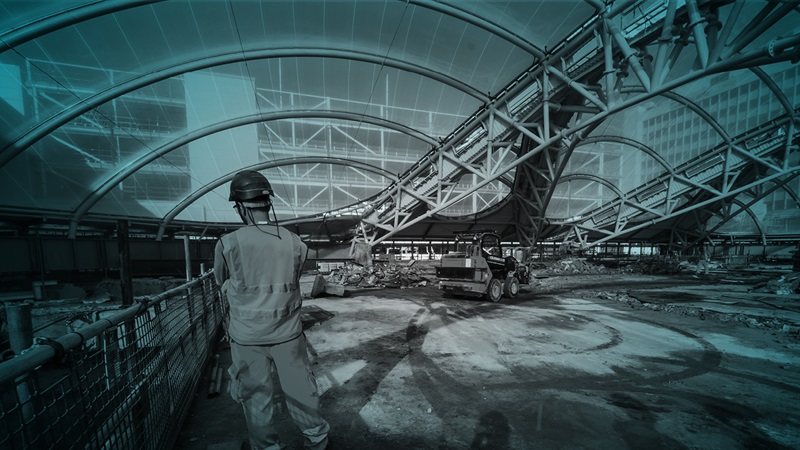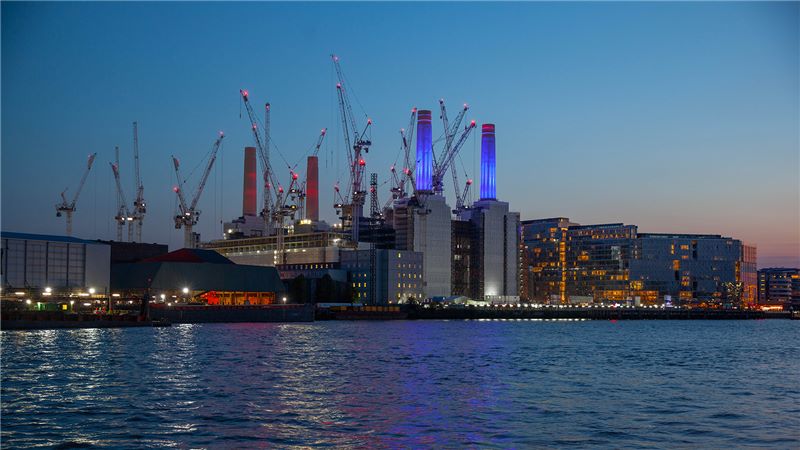Riding out the second wave: how construction should prepare
Across the globe we are seeing the emergence of a second wave of coronavirus infections in a number of countries.
Almost inevitably, the careful balancing act between public health measures and economic activity that governments have been facing has led to a rise in cases as lockdowns ease. Although largely these have been more localised than national, any sign of a second wave will raise alarm bells across continents.
If a second wave does emerge, how can the construction sector ensure it is prepared for the worst? What lessons can we take on how our industry reacted to the first wave of the pandemic? With a second global spike of infection, what should we be doing now to ensure we’re as resilient as possible?
Global construction and the pandemic
By some measures, construction is the world’s largest industry; accounting for 13% of global GDP.i In most developed economies around the world, the coronavirus led to a significant economic lockdown.
Although the specific impact on construction varied, in some states sites were ordered to close while in others they either temporarily paused or were able to remain open throughout. In the vast majority of economies the construction industry suffered significantly as productivity and output went into sharp decline.
Overall, the global construction industry (according to analysts) is predicted to drop from an expected positive 3.1% annual growth rate in 2020 to 0.5%ii for 2020. In many markets experts are forecasting a significant contraction in 2020; such as in South and Southeast Asiaiii where a previously growing construction industry is now likely to see a 4.3% contraction by the end of the year.
Even in markets where construction was exempted from lockdown requirements – such as France – the outlook is exceptionally poor. The French construction industry is now expected to contract by 9.4%, despite efforts by the Government to direct investment into infrastructure delivery to kick start economic growth.
Lessons from the first wave
So what can we learn from the first wave of the pandemic and how we responded? Drawing on our experience of the pandemic as a major European contractor and as a leading global consultant, we’ve outlined six key lessons below:
1. The health, safety and confidence of the workforce is key
In many countries, the workforce that delivers construction is specialised, indirectly employed and highly mobile. Prioritising the health and safety of the teams working on construction sites is absolutely the correct ethical choice – but it was also crucial in ensuring that people felt confident that they could safely return to work which, in turn, enabled sites to build back up to effective output levels.
2. Uncertainty drives inactivity
The speed with which many countries introduced lockdown measures meant that guidance was often incomplete and difficult to interpret. In the UK, for example, the Government was clear from the beginning that construction should be able to stay open safely, but many companies closed sites voluntarily in order to ensure that they were able to operate while respecting social distancing measures. Clear and timely guidance from governments and public health bodies is critical for the industry to ensure it is acting responsibly.
3. The benefit of consistent demand
Many industries – from manufacturing to retail and hospitality – saw immediate falls or changes in demand as the pandemic took hold globally. For the construction sector, however, the impact of economic shocks is typically delayed. Once work has begun on site, developers and clients continue to need their projects to be built. As such, the sector should be able to remain resilient in the short to medium term as long as it is still able to get people and materials to sites safely.
4. Support programmes can have unintended consequences
Across the globe, governments have rapidly introduced support programmes to support shattered economies. These have helped to protect millions of jobs – but they have sometimes had unintended consequences.
Minimum furlough periods, for example, prevented UK manufacturing getting back up and running fast enough to support the re-opening of the construction sector. Similarly, income support programmes can serve to disguise the true scale and location of employment loss.
5. Potential productivity and safety improvements
Evidence from Mace’s own construction sites shows that the added logistical and planning requirements of social distancing measures, and other restrictions, has resulted in a measurable increase in productivity per worker – and potentially an increase in health and safety performance.
Although this impact is difficult to quantify precisely, it is clear that it is possible to drive up productivity to help mitigate the impact of lockdown measures.
6. Close partnership working is critical
Many experts predicted a huge rise in legislation and conflict between clients, contractors and suppliers as lockdown began but, in practice, so far the impact of litigious behaviour has been limited. Although there is still the potential for significant legal disputes, the vast majority of companies in the sector chose to work collaboratively to overcome the challenges of the pandemic.
The likelihood of a second wave of infections
Construction is an industry that already suffers from historically low margins in almost every country around the globe – an average of 5% earnings before interest and taxes (less than 2% in the UK) – and meagre productivity growth. The existing damage done by the pandemic and economic lockdowns is extraordinary – so what will happen if we see a second wave of global lockdowns?
It is important to note that the coronavirus pandemic has not moved through the world’s societies at equal speed. Eight months since the first coronavirus cases were publicly recognised in Wuhan, different countries have dealt with the pandemic at vastly different stages. We cannot talk of a consistent second wave when some countries – such as the US – only really saw a pause in new cases and others, such as New Zealand, appear to have stemmed the tide altogether.
However, in most of Northern Europe and a number of other developed construction economies, such as Singapore and Vietnam, it is becoming clear that multiple waves of infections, and some kind of repeated lockdown requirement to protect healthcare capacity, is seemingly inevitable.
The reality is that the conditions required to prevent a resurgence of infections are not in place in the majority of countries. In countries across Europe, governments are issuing stark warnings about rising numbers of infections;iv and the European Centre for Disease Prevention and Control has warned that “the question is when and how big” when it comes to a second wave across the continent.
In the UK, local lockdowns are already being initiated in a number of cities and towns, and plans are being proposed for how the country will respond nationally if it sees a significant rise in infections. These plans include restrictions on travel outside of the M25 from London and the reversal of a number of measures introduced to reduce lockdown over the last two months.
What happens to the construction industry in a second wave?
It has now become clear that the effective management of a pandemic like coronavirus is a careful and delicate balancing act between the capacity of public healthcare systems and the economic activity that supports peoples’ livelihoods and allows societies to continue to function.
If a second wave of infections does occur at a significant scale, it is almost inevitable that governments will need to impose new lockdown restrictions to prevent healthcare facilities becoming overloaded. However, in Mace’s view there are a number of reasons to be optimistic that construction will face a limited impact compared to other economic sectors:
1. The sector is seen as critical to economic recovery
For many countries across the world the construction sector is seen as critical to the economic recovery from the pandemic – huge programmes of investment are being drawn up and implemented. It is likely that governments will prioritise their construction sectors to drive their economies while considering new lockdown measures.
2. New lockdowns are likely to be local rather than national
With advances in tracking and tracing systems all over the globe, it is likely that new measures introduced to combat rises in infections will likely be local, rather than the blunt national instruments used in the first wave of the pandemic. This will mean less disruption for supply chains and a more consistent construction workload across national economies.
3. Supply chains are more resilient than ever
The pandemic has forced the majority of companies to become more invested than ever in the performance of their supply chains. The visibility and resilience work that was done to enable companies to restart operations effectively will pay dividends in a second wave as organisations are able to manage delays and stoppages much more effectively.
Preparing for a second wave – how do we minimise risk?
Building on our own experience of the pandemic, the work we have done with our clients and our delivery expertise, Mace has established a series of key actions that the sector should follow to ensure that if a second wave of the pandemic hits we are as prepared as possible:
Prioritise and enforce current health and safety measures
The safety of our people and the communities we work in must be paramount. The most important thing we can do to is ensure that our sites and offices provide clean and hygienic working environments.
Alongside the significant risk to individuals if they become unwell, a relaxation of measures could lead to construction being seen as an ‘at risk’ industry. In turn, this will make it harder for the sector to continue to operate. The safer we are, the more productive we will be.
Proactively address fatigue and mental wellbeing
After months of effort closing and re-opening sites – often with a reduced workforce due to furlough and social distancing measures – many teams across the industry will be feeling fatigued and their mental health and wellbeing will have suffered.
If a second wave hits, stress and workload levels will rise again. It is vital that the industry takes appropriate measures to address these issues among their teams.
Encourage collaborative working with partners
The first wave of the pandemic was an extraordinary, once in a life time event, but it will be hard to claim that a second wave of infection was unforeseen or unpredictable – and so it is likely that people will be less willing to work together to mitigate the impact on businesses.
Companies should be speaking to their clients and suppliers now about a second wave and agreeing the approach. Otherwise there is a risk that agreed contractual positions may be reversed, opening up huge commercial risks.
Increase productivity across projects and programmes
Every programme and project must focus on measures to drive up productivity across the supply chain and on site. A greater emphasis on productivity – and the adoption of new technology and offsite techniques – will be critical to protecting output levels. This is critical now, but will become even more important if and when a second wave of lockdown measures is introduced.
Ensure programmes are up to date and resilient
Consistent delivery required good planning and plans are only as good as the assumptions that have been made. It is critical during this period to continuously review, programme by programme, the delivery and contingency plans.
What does the next six to eight weeks look like for your business? Have you identified pinch points and risks?
Continually measure supply chain performance
Over the last four months, supply chains around the globe have suffered from numerous shocks and have largely reacted effectively. However, many borders remain closed or heavily controlled and a second wave will exacerbate issues.
All companies should be continually and proactively monitoring all of their supply chains – particularly those critical to project delivery – to ensure that they receive early notice of any delays or problems.
Develop contingency plans for local lockdowns
The likelihood is that most new lockdown requirements will be local, which adds an element of unpredictable risk to project delivery. Each project and company will need to develop plans that address this specific concern – particularly those in mega-cities like London or New York where new local measures would impact hundreds of large construction projects.











